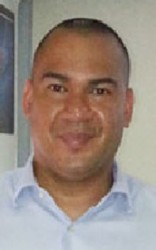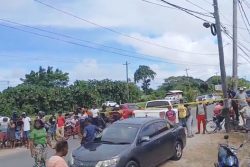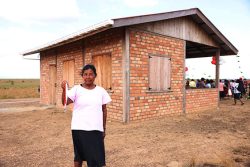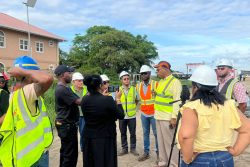A leading technology company is calling for the authorities to ensure that the broadcast and cable spectrum is fairly allocated and feels that while taking away licences is a backward step, reallocation of unused portions of the spectrum to new investors might be a better option.
Speaking to Stabroek News, George Melville of Global Technology said there is a need for better television in Guyana and the only way it could improve is if investors come in and everyone gets a fair chance.
It was revealed earlier this year in the National Assembly that two cable operators considered to be the largest in the country were allocated what is considered in the industry the preferred spectrum for services such as triple play – cable television, telephone and internet.
In 2010 Brian Yong and Vishok Persaud were awarded cable licences and this raised questions about the fairness of the process given that both of these men were in some way linked to former president Bharrat Jagdeo.
While they were granted licences for cable, veteran television entrepreneur Anthony Vieira was snubbed even though his proposal entailed revenue to the city of Georgetown.
Stabroek News sought comments from both Yong and Persaud. While Persaud could not be reached despite messages left at his place of business, Yong, when contacted, said that he would not be commenting on the matter.
Prime Minister Sam Hinds recently said he could not say what the fee was that the two entrepreneurs were paying to the state, but whatever it was it was evenly applied across the board.
With regard to cable television, Melville said he wants in. “I have applied for cable spectrum, I want some. I believe Guyanese need better TV. We don’t have HDTV yet. There is a need for better quality service and I applaud Vishok and Brian for taking the step of going that way,” he said.

“The licencing thing, I don’t know too much about it, but from my side I want a licence too. How I believe we should look at it is [to] see who [are] the people with the capabilities of offering something similar, maybe with a twist, maybe making it cheaper,” said Melville.
“There has been a lot of noise about what has been allocated. I don’t want to see it withdrawn. What I would like to see is more work being done by NFMU to actually see if those things are being used,” he said. “Don’t shut down the entire service, just take back the pieces that they are not using,” Melville said.
“Maybe they are licenced for this particular spectrum but they are not using all of it. If they don’t have 500 channels and they only have 100 it means that they are clogging up space and not efficiently using the spectrum,” said Melville. “Maybe one solution would be to actually run a scan and see what is being used and allocate the unused portion to some of the other applicants who are [waiting],” he said.
He said that there is a need for cable services to extend beyond the city of Georgetown. “Guyana doesn’t stop at the Demerara Harbour Bridge, or at Enmore, but those guys’ signals stop there,” he said. “There is a whole big piece of Guyana that is still not covered by these guys,” he said.
“My approach would be to make the areas not covered by these guys available to other people. I would love to have towers from Skeldon to Mabaruma going right down to Lethem. And I am not the only one I am sure,” he said.
“I would encourage the authorities to give us the newest technology that is available. Ask Brian and Vishok what else they need to access the rest of the country and at the same time look favourably on other companies. [The two of them] took a chance and they invested. We should be saying let’s support these guys…let’s push them to do more, but let’s not lock out other young guys who want to offer something similar,” he said.
“You can’t give two guys the entire spectrum…split it up. Give a couple of other people too,” he said. He said that broadcasting on 2.5 GHz might be better than doing so on 2.4 GHz since it allows for more channels. He said that his company would have to broadcast on 2.4 GHz since its licence stipulates this frequency. “I currently have a data licence for 2.4 GHz and I am asking the NFMU for additional frequencies. If I don’t get that I may very well start broadcasting at 2.4 GHz. That is what I am licensed to do but that is not my ideal choice,” he said, adding that 2.4 GHz and 5.8 GHz are public spectrums and they often have a lot of noise in the background.






